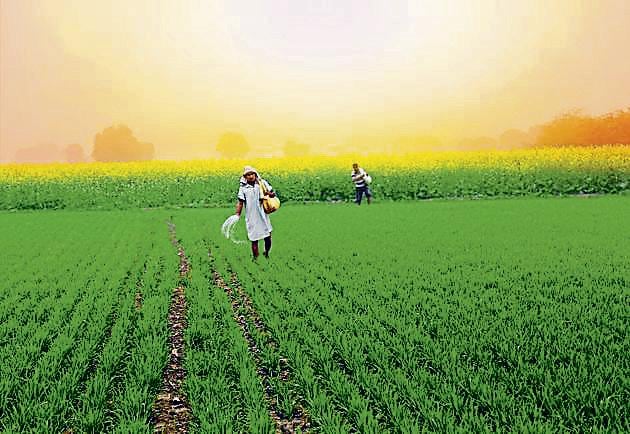Don’t look at monsoon only, examine soil moisture to predict crop yield, says IIT study
The study suggests that rising temperatures are depleting the soil moisture more quickly, which affects agricultural productivity
Traditionally, the monsoon has been viewed as a key indicator of how good the agricultural yield will be. However, a new study by Indian Institute of Technology (Gandhinagar) suggests that the rising temperatures are leading to soil moisture depleting quicker, which in turn affects agricultural productivity.

India has two main cropping patterns – kharif season, which is between July and September, for the monsoon crop; and rabi or the winter crop, which is cultivated between November and March. Rainfall in the monsoon, between June and September, delivers 73% of the country’s total precipitation and a deficiency usually means drought. A normal, or average, monsoon means rainfall between 96 and 104 percent of 89 cm. A good monsoon is usually reflected in kharif harvest.
The IIT-Gn study found that over the years, depleted soil moisture had led to large-scale droughts during rabi season despite adequate rainfall during the monsoon. This means monsoon rainfall may not an accurate indicator for drought forecasts.
IIT-Gn reconstructed droughts events over India from 1951 to 2015 using 60cm depth soil moisture that was simulated from three land-surface hydrological models. Conditions, including the amount of daily rainfall, maximum and minimum temperatures, and wind speed, were replicated using data from the India Meteorological Department (IMD). Results showed that in the 64-year study period, there were more large-scale droughts during rabi season (in 1966, 1973, 2001 and 2003) as compared to kharif season (1987, 2002, and 2015).
“Moisture in the soil builds up during the monsoon season. So theoretically, it may seem normal conditions will prevail during the non-monsoon season. In reality, however, soil moisture starts depleting owing to high temperature anomalies from October to March that could lead to a drought or severe drought,” said Vimal Mishra, lead investigator and an associate professor of civil engineering at IIT-Gn.
The study emphasised that soil moisture, rather than the amount of rainfall during the monsoon, should be considered to monitor, assess, and predict a drought situation during the non-monsoon season, which will help policy makers to evaluate and calculate irrigation demands for crops.
Experts agree that emphasis should be placed on soil moisture, rather than monsoon rainfall. “Water availability for crops in the Rabi season is not solely dependent on the total amount of precipitation during southwest monsoon. It also varies with several factors including intensity of rainfall, type of crop, type of soil, surface and groundwater irrigation,” said Satkumar Tomer, technical director Aapah Innovations, Hyderabad, which has developed state-of-the-art algorithms to estimate various agro-hydrological variables such as soil moisture and crop health using satellite data in real time.
Tomer, who was not involved in the study, said, “The knowledge of soil moisture during rabi cropping season is therefore without doubt a more realistic indicator of the health of crops relative to the amount of precipitation during southwest monsoon.”
At present, the National Agriculture Drought Assessment and Monitoring System provides information on the prevalence, severity and persistence of drought only during the monsoon crop season. The study has recommended a dynamic prediction of drought during the non-monsoon season as well. “Since water stress is a major limiting factor for crop yields in India, it is of paramount importance for farmers to get timely information on the likely soil moisture during a cropping season that will help in making a well-informed decision about which crop to grow,” said Tomer.
Stay updated with all the Breaking News and Latest News from Mumbai. Click here for comprehensive coverage of top Cities including Bengaluru, Delhi, Hyderabad, and more across India along with Stay informed on the latest happenings in World News.
Stay updated with all the Breaking News and Latest News from Mumbai. Click here for comprehensive coverage of top Cities including Bengaluru, Delhi, Hyderabad, and more across India along with Stay informed on the latest happenings in World News.






